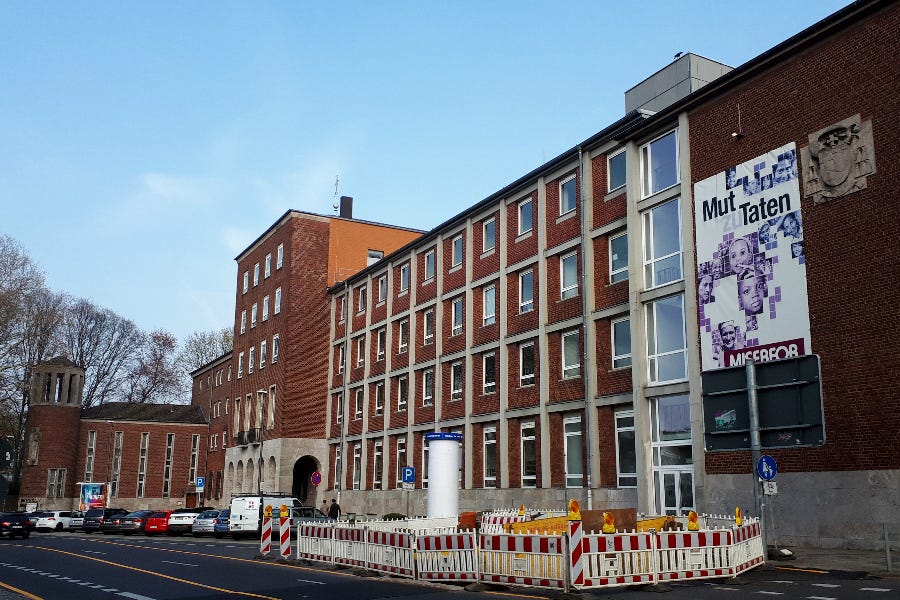The Catholic Church in Germany’s contribution to aid projects worldwide fell for a second successive year in 2024.
 The headquarters of Misereor, a charity focused on serving the poorest of the poor, in Aachen, Germany. ArthurMcGill/wikimedia CC BY 3.0.
The headquarters of Misereor, a charity focused on serving the poorest of the poor, in Aachen, Germany. ArthurMcGill/wikimedia CC BY 3.0.
An annual report published Aug. 6 said the Church in Germany gave around 595 million euros (approximately $692 million) to overseas projects last year, down roughly 3% from 2023 after adjusting for inflation.
The decline in aid is likely to be felt by the Church in Africa, Asia, Latin America, and Eastern Europe, where many projects are reliant on support from German Catholic organizations.
The impact may be compounded by significant reductions in international aid from some of the world’s leading donor nations, including the U.S., U.K., France, and Germany.
German Catholic aid has fallen globally since 2022, when a record 673 million euros was spent on relief projects, spurred by the Ukraine war. In 2023, the figure fell to 624 million euros.
The biggest recipient of aid from the Church in Germany in 2024 was Africa (200 million euros), followed by Latin America (144 million euros), Asia (137 million euros), and Europe (76 million euros). The remainder was allocated to initiatives spanning multiple regions.
Donations and collections were the source of 62% of the funds in 2024, while 7% came from the country’s church tax.
Germany is home to some of the world’s largest Catholic charities, including Adveniat, which operates in Latin America and the Caribbean, Misereor, which focuses on serving the poorest of the poor, and Renovabis, which helps people in Central and Eastern Europe.
Caritas in Germany, which has almost 700,000 employees, works with Caritas partner organizations in Africa, Asia, Latin America, and Eastern Europe.
In 2024, there were 1,172 German missionaries working worldwide, down from 1,197 the year before. They consisted of 385 members of male religious orders, 564 female religious, 121 secular priests, and 102 lay missionaries.
The latest aid figures come amid belt-tightening across the Catholic Church in Germany.
Church officials announced in July that they needed to make “hard cuts” to expenditure from a common fund known as the Association of the Dioceses of Germany, citing a declining number of Catholics and an anticipated fall in church tax income.
Among the first organizations affected was the Allgemeiner Cäcilien-Verband für Deutschland, an association promoting church music that was founded in 1868.
The body reportedly informed members Aug. 4 that it would no longer receive an annual subsidy of 50,000 euros from 2027. The subsidy accounts for around 40% of the income of the association, which will hold an extraordinary general meeting in September to discuss its future.
Meanwhile, two of Germany’s dioceses have recently reported deficits.
The Diocese of Passau in Bavaria said this week that it had a deficit of around five million euros in 2024, after recording a surplus of 37.7 million euros in 2023. The diocese, led by Bishop Stefan Oster, blamed the result on unpredictability in the church tax system.
In July, the Diocese of Limburg, led by German bishops’ conference chairman Bishop Georg Bätzing, said it had recorded its first annual deficit.
The diocese said the reasons for its 810,000 euro shortfall in the 2024 financial year included “rising personnel and pension costs, a continuing decline in church tax revenues, and the financial consequences of social megatrends such as demographic change, dwindling church loyalty, and increasing secularization.”
The diocese predicted a deficit of more than 100 million euros for 2035, but insisted it had the resources to cope with future challenges.
Not all recent economic news for the Church in Germany is negative. In July, the Church authorities announced that the country’s 27 dioceses received a total of 6.62 billion euros via the church tax in 2024, up from 6.51 billion euros in 2023.
The rise came despite a further 321,611 Catholics formally leaving the Church in Germany in 2024, meaning they will no longer contribute to church tax.
The paradox of rising church tax revenue despite an annual decline of hundreds of thousands of Catholics could be explained by positive economic trends, such as rising wages. Alternatively, it may be due to higher-earning Catholics remaining in the Church while smaller contributors leave.
Nevertheless, Catholic officials believe the phenomenon of rising revenue and declining membership will end soon, with a sharp reduction in the Church in Germany’s income.
